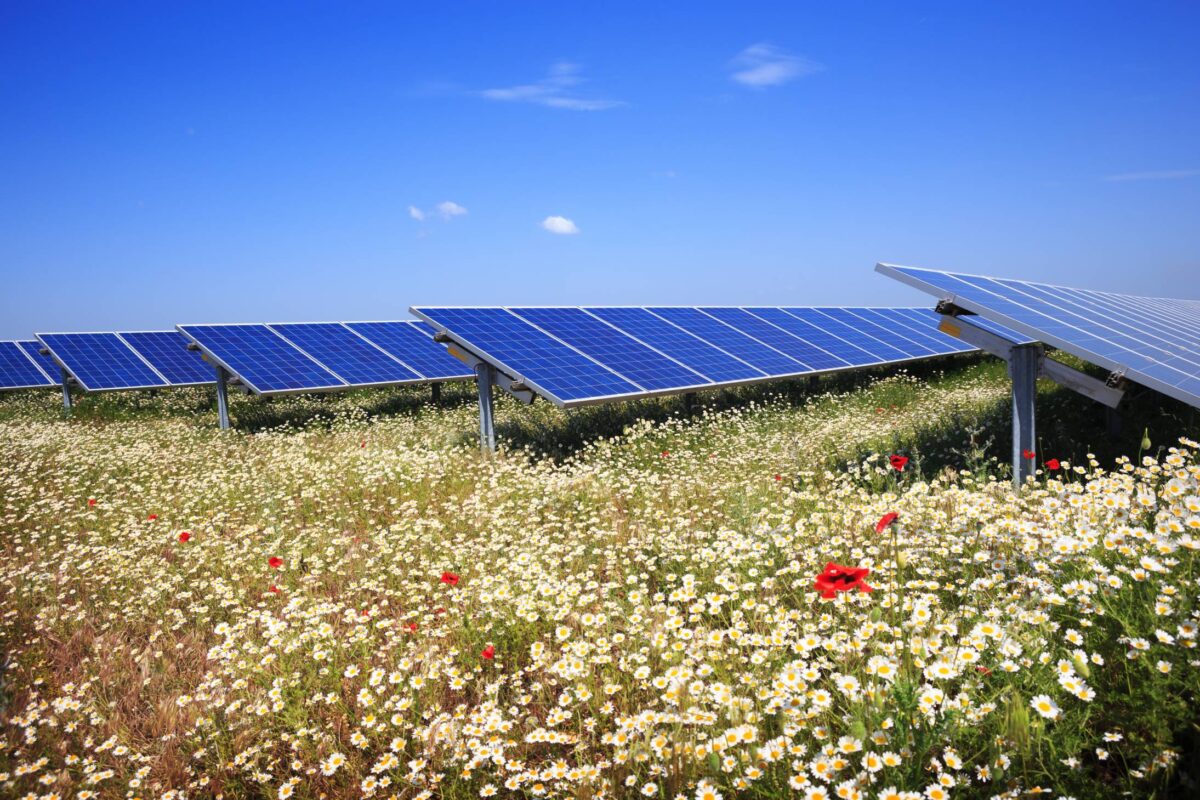https://www.pv-magazine.com/2023/05/11/building-nature-friendly-solar-parks/
Building nature-friendly solar parks

Image: SolServices
In an effort to share its know-how on the construction of more eco-friendly solar farms, Hungarian solar company SolServices collaborated with national parks, environmental protection organizations, energy companies and even beekeepers to produce a comprehensive white paper.
The “Professional Guide for the Development of Next-Generation Solar Parks” offers a completely new, practice-based methodology detailing how solar farms can be operated in an ecologically conscious and nature-friendly manner and that can be recommended to investors.
Based on the company’s earlier biomonitor surveys but expanded in scope, the white paper aims to ensure that solar parks built on large stretches of land fit into the ecological balance of the area, taking into account as much as possible its ecological, biological and natural features.
Based on Hungary’s geographical and solar radiation characteristics, solar energy has a very high potential for electricity generation in the country. Installed PV capacity reached 1,144 MW at the end of 2019, of which around 38% was made up of household-sized units of less than 50 kW. The remaining capacity is spread among small plants with capacities below 0.5 MW and a few plants of a few megawatts.
Hungary’s new National Energy Strategy aims to expand solar capacity to 6,000 MW by 2030, and which could reach 12,000 MW by 2040. The country, however, requires grid upgrades to meet the challenges of a decentralized and highly weather-dependent electricity generation structure. It also requires the expansion of larg-scale facilities.
Achieving the country’s ambitious goals can only be achieved “in an environmentally and nature-friendly manner, taking into account the ecological requirements and characteristics of the given area as much as possible,” SolServices states in the report.
“Agri-environmental research in recent years has shown that, with appropriate land use and the strengthening of plant communities, wildlife populations can be significantly increased in agricultural areas,” it adds, noting that solar parks can effectively support wildlife and increase biodiversity.
“A particularly positive factor is that, with proper design and minimal management and intervention, a solar park can provide an almost undisturbed habitat for both flora and fauna for some 30 years after construction. A very small part of the solar farm area, less than 5%, is physically covered by various infrastructure (roads, inverters, support poles for panels), and even with the parts of the area covered by panels, this proportion covers only about 50% of the total area. The area not covered and partially shaded by the panels, i.e. roughly 95% of the solar park area, can be a diverse habitat for plants and animals.”
Popular content
The paper details a number of methods that can be used to create suitable habitats to increase biodiversity and create a more natural vegetation cover that can benefit a wide variety of wildlife, from insects and amphibians to birds, bats, rodents and big game.
Pollinating insects, for example, benefit from a patchwork of plants that flower at different times of the year. “In addition, from herbaceous plants, the planting of red clover, which has been shown to increase the presence of bumblebees and butterflies, is of particular importance,” the paper notes. Clematis and honeysuckle grown on fences can also benefit pollinator species.
Amphibian-friendly solar parks can be considered if site conditions are suitable for permanent or temporary surface water and wetland habitats in the project area. “Reptiles prefer dense, bushy, lush undergrowth, so it is advisable to leave a minimum strip of 2 m of untidy, untrimmed vegetation along wetland areas (e.g. drainage ditches). In addition to offering easier and safer movement for animals, they also provide a home for many species of molluscs, worms and insects, and the latter provide a suitable food source for amphibians.”
For rodent and small game-friendly parks, sufficiently quiet and undisturbed habitats are necessary. Mosaic mowing and the creation of undisturbed green corridors to provide free movement and shelter for small animals are important when managing green areas, the paper advises. Such parks should include shrubs and hedges — taking into account the requirements of emergency management guidelines — as well as haystacks from locally mown hay, which can be used as daytime and winter shelter. Passages or tubes, both on the surface and underground, can facilitate the introduction of ground squirrels.
PV farms also offer different uses for a variety of different bird species. Some may use them as nesting and breeding places, while others may use them as feeding or resting areas. “We can help various species to disperse and breed in the project area by installing different types of dens or artificial nests, or by planting shrubs and trees, as long as this is compatible with the safety requirements of the solar farm and does not interfere with energy production,” the company explains.
Likewise, solar parks can be potential habitats for certain bat species. In Hungary, there are some 30 bat species found in a wide range of biotopes, from urban environments to natural habitats and abandoned mines. Insect-rich solar parks can be suitable feeding sites for bats.
Big game can be expected in arable land and grassland close to forest edges. The presence of big game around in solar parks, however, should generally be minimized to protect both the animals and equipment.
“Therefore, in the case of a big-game-friendly park, we are talking about solar parks that help big game to safely escape from the project area. To this end, it is recommended to install jump exits for big game. In addition, we can also install wildlife guide structures within the solar park to help stray animals find their way out as quickly as possible. These tools are especially useful in the first two years after installation, but can also be a valuable feature of the solar park after that.”
This content is protected by copyright and may not be reused. If you want to cooperate with us and would like to reuse some of our content, please contact: editors@pv-magazine.com.



